Minute Hand – Introduction
Have you ever seen a clock? We often encounter clocks at many places in our daily life, like in our homes, offices, schools, shopping malls, etc. A clock tells us the time. It helps us manage our timetables and schedule our activities. We can say that a clock helps us to perform our activities on time.
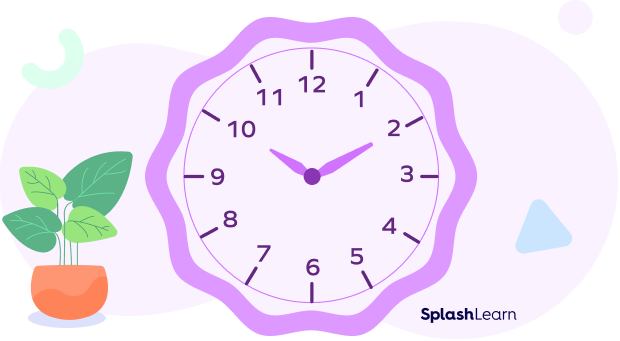
Recommended Games
Hands of a Clock
The clock generally has three hands to tell us time — an hour hand, a minute hand and a second hand. Some analog clocks have only two hands: the shorter hand representing the hour and the longer hand indicating the minutes. The shorthand in a clock is called the hour hand, and the long hand is known as the minute hand. The hour hand tells us time in hours, while the minute hand on a clock tells us time in minutes.
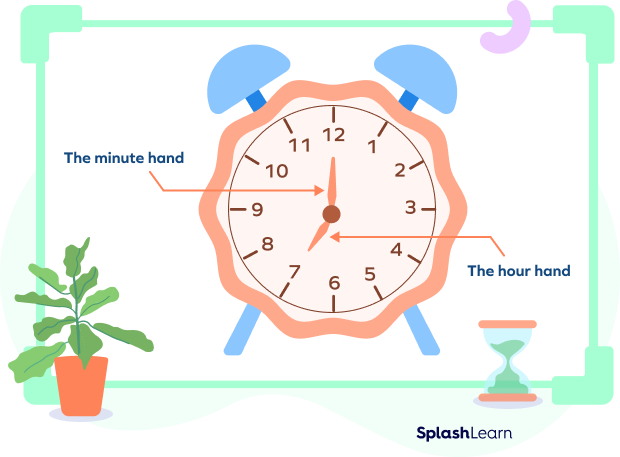
An hour is a long period. We generally use hours to indicate when an activity takes a long time to complete. For example, we use hours to indicate the time we spend at school or while sleeping at night.
A minute is a short period. We often use it to indicate the time spent doing a short activity. For example, we use minutes to indicate the time we spend eating breakfast or watering our plants.
A clock has the numbers 1 to 12 marked serially on its face or dial. These numbers are placed at equal distances from each other. They divide the face of the clock into 12 equal parts.

The hour hand in a clock defines the space of an hour. When the hour hand moves from one number to the next on the clock face, it indicates 1 hour. For example, when the hour hand moves from 1 to 2 on the clock face, it means one hour has passed.
Recommended Worksheets
What Is a Minute Hand on a Clock?
The minute hand on a clock is the long hand that tells the minutes that have passed in that hour. In simple words, it indicates the time in minutes.
The distance between two numbers on the clock face is divided into 5 small sections. Each of these small sections or divisions represents one minute.
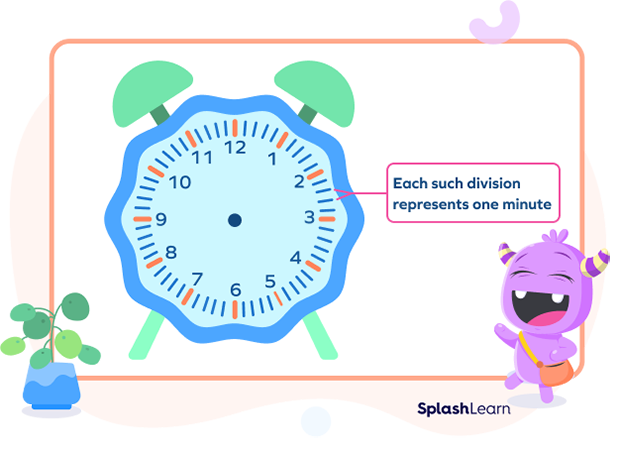
There are 60 small divisions on a clock face. When the hour hand moves from one number to the next, the minute hand goes through these 60 divisions. This means that there are 60 minutes in one hour.
How to Read Time to the Minute?
Take a look at the clock below. Here, the hour hand is pointing at 3, and the minute hand on the clock is pointing at 12. So, the time is 3 o’clock. After 1 hour, the hour hand will be at 4, and the minute hand will be again at 12. The time will be 4 o’clock.

In this duration of 1 hour, the hour hand will move from 3 to 4. But the minute hand will move one whole cycle of the clock face.
To read the time in minutes, we look at the number to which the minute hand points. We use skip counting by 5 to read the position of the minute hand on the clock face, i.e., 5, 10, 15, 20, 25, 30, and so on.
The figure below shows the minute count corresponding to each of the 12 divisions on a clock face.
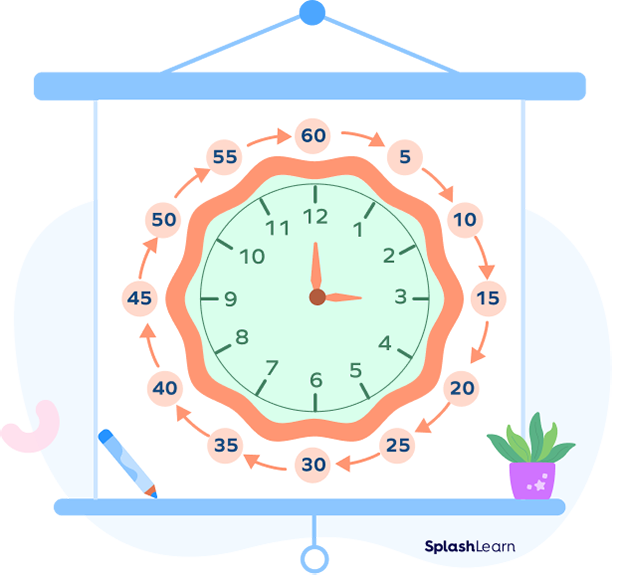
Let’s understand this with an example.
Take a look at the clock below.
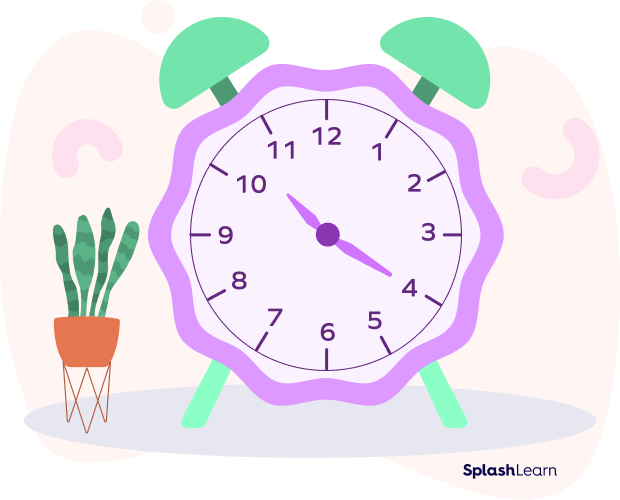
Here, the hour hand is between 10 and 11. The minute hand is at 4. We skip count by 5 to determine the minutes that have passed in that hour 4 times, i.e., 5, 10, 15, 20. This indicates that 20 minutes have passed in that hour.
This means 20 minutes have passed after 10 o’clock. And we write this time as 10:20. The number before the colon here represents the hour and the number after the colon represents the number of minutes that have passed since that hour.
Example 1: What time is shown on the clock below?
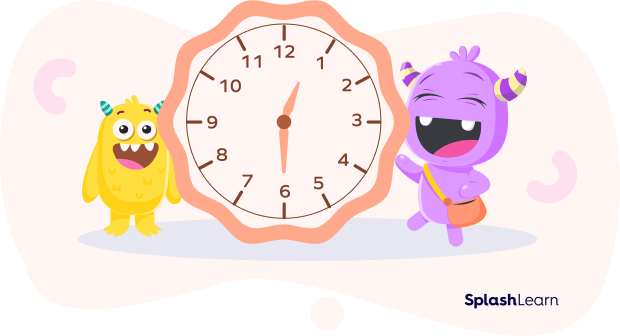
Here, the hour hand is between 12 and 1, and the minute hand on the clock points towards 6. We skip count by 5, 6 times, i.e., 5, 10, 15, 20, 25, 30. This means that when the minute hand points to 6 on the dial, it is 30 minutes past the current hour.
So, the time is 12:30.
Example 2: Tell the time as seen on the given clock.
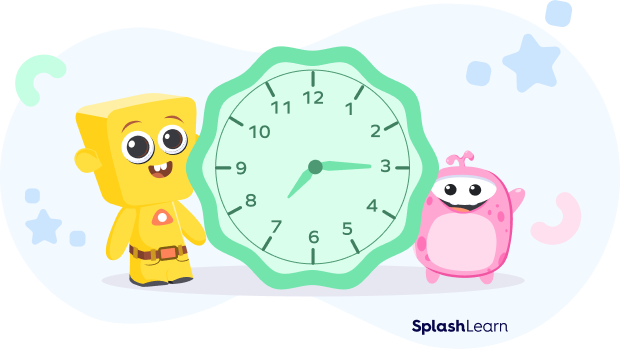
Here, the hour hand is between 7 and 8, and the minute hand one the clock points at 3. We skip count by 5 times to determine the minute count 3 times, i.e., 5, 10, 15. This means it is 15 minutes past the current hour. So, the time is 7:15.
Example 3: What is the time as seen on the clock face below?
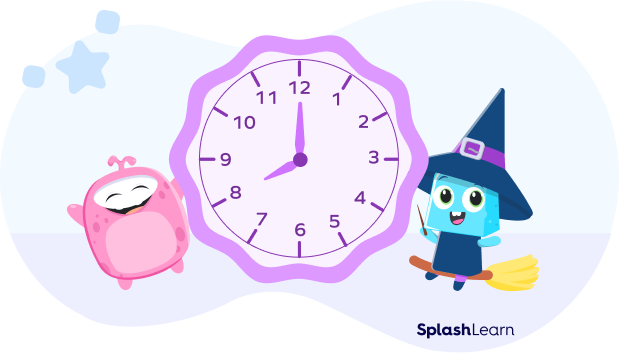
On this clock, the hour hand is at 8, and the minute hand is at 12. So, it is 8 o’clock. We write the time in the digital format as 8:00.
Points to Remember
If we divide the clock face into four quarters, we can read the time easily when the minute hand reaches a certain number.
- When the minute hand on a clock points at 12, it indicates the start of a new hour.
- When the minute hand points at 3, it indicates 15 minutes have passed since that hour, and we say we are a quarter past the current hour.
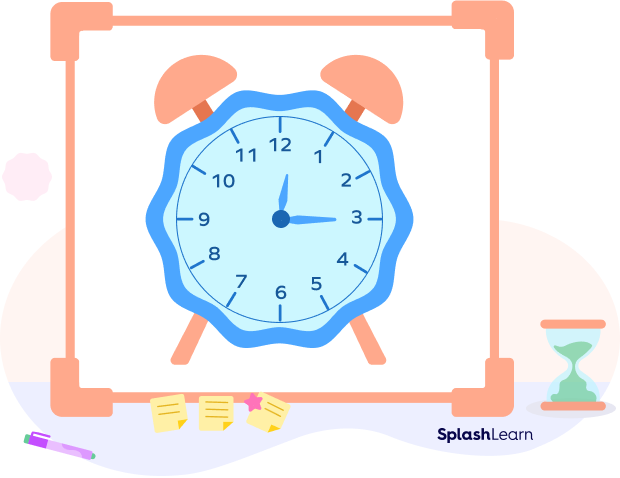
When the minute hand on a clock points at 3, we are 15 minutes into the hour. Since the amount of time we have covered looks like a quarter of a circle, we call this time quarter past 3.
- Now let’s look at the next one:
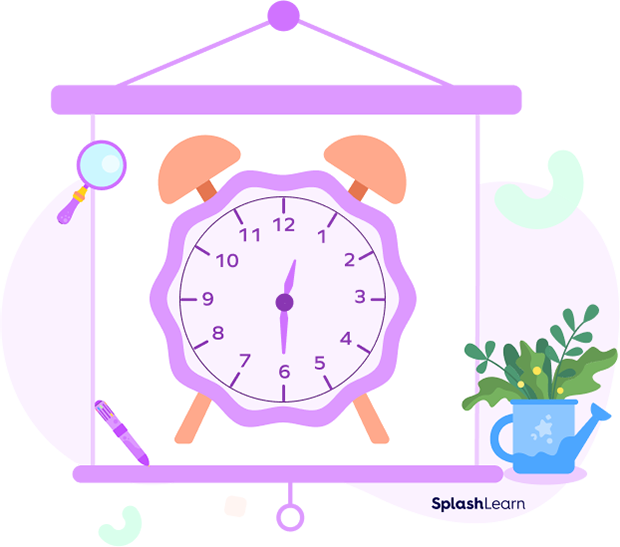
- When the minute hand points at 6, we are 30 minutes into the hour. Since the amount of time we have covered looks like half of a circle, we call it half an hour. So the time in the above clock is half past 12.
- When the minute hand points at 9, it indicates we are three-quarters past the current hour.
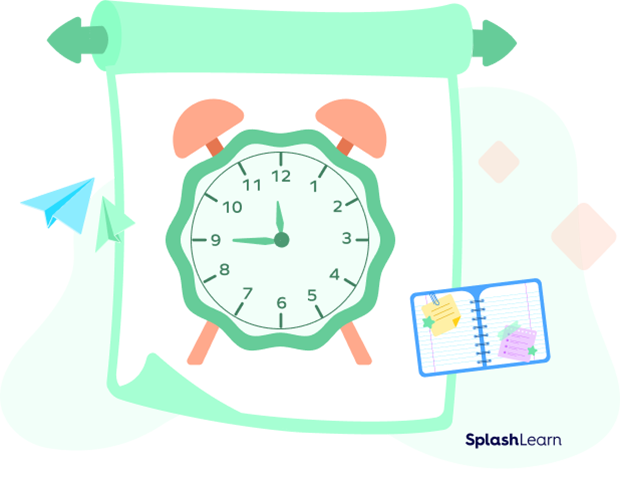
When the minute hand on a clock points at 9, we are 45 minutes into the hour. In the above clock, since we only need to cover one more quarter to reach the next hour, we call this time quarter to 12.
Fun Fact!
- The minute hand on a clock moves faster than the hour hand but slower than the second hand.
- While the minute hand completes a single round of the clock face in 60 minutes, the hour hand does so in 12 hours.
Solved Examples
Example 1: Read the time as seen on the clock given below.
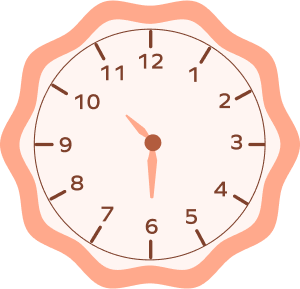
Solution: Here, the hour hand is between 10 and 11. The minute hand points at 6. We count the minutes by skip counting by 5, 6 times, i.e., 5, 10, 15, 20, 25, 30.
So, the time is 10:30.
Example 2: What is the time as shown on the clock below?
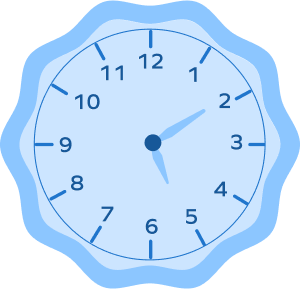
Solution: Here, the hour hand is between 5 and 6. The minute hand points at 2. We count the minutes by skip counting by 5, 2 times, i.e., 5, 10.
So, the time is 5:10.
Example 3: Calculate the time as shown on the clock below.
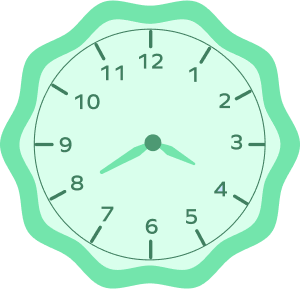
Solution: Here, the hour hand is between 3 and 4. The minute hand is at 8. We count the minutes by skip counting by 5, 8 times, i.e., 5, 10, 15, 20, 25, 30, 35, 40.
So, the time is 3:40.
Practice Problems
Minute Hand on Clock
Which of the following means 5:30 in words?
5:30 means the time is 30 minutes past 5. One hour contains 60 minutes. So, 30 minutes means half an hour. Half past 5 means the time is half an hour past 5 o’clock.
If the minute hand on a clock points at 9, which of the following sentences will be true?
Skip counting by 5, 9 times, we get 5, 10, 15, 20, 25, 30, 35, 40, 45.
So, the minute hand has covered 45 minutes on the clock face.
What is the time shown on the clock below?
Here, the hour hand is between 10 and 11. The minute hand is at 2. We count the minutes by skip counting by 5, 2 times, i.e., 5, 10. So, the time is 10:10.
Frequently Asked Questions
How many rounds does the minute hand on a clock dial complete in a single day?
The minute hand on a clock dial completes 24 rounds in a single day.
How many minutes make a quarter of an hour?
15 minutes make a quarter of an hour.
In which direction do the hands of a clock move?
The hands of a clock move in the clockwise direction. If you consider 12 to be the starting point, the hands move from 12 to 1, 2, 3, and so on.




































